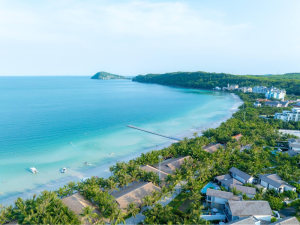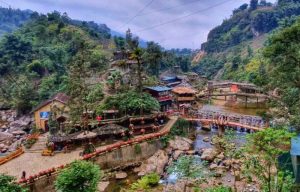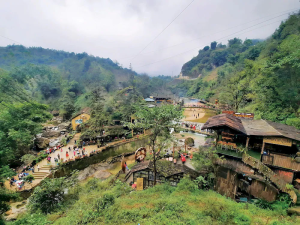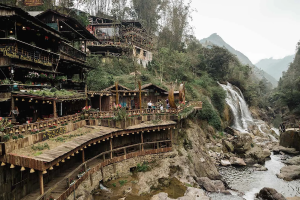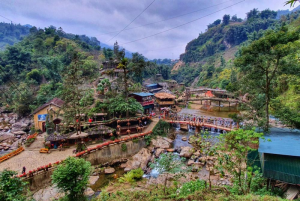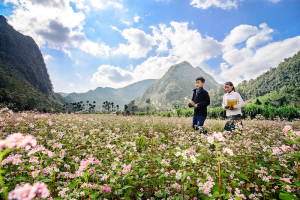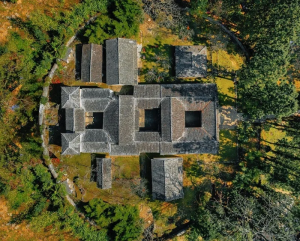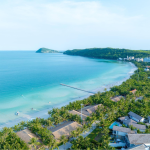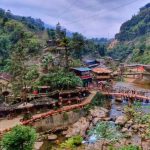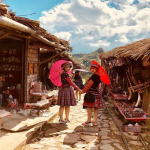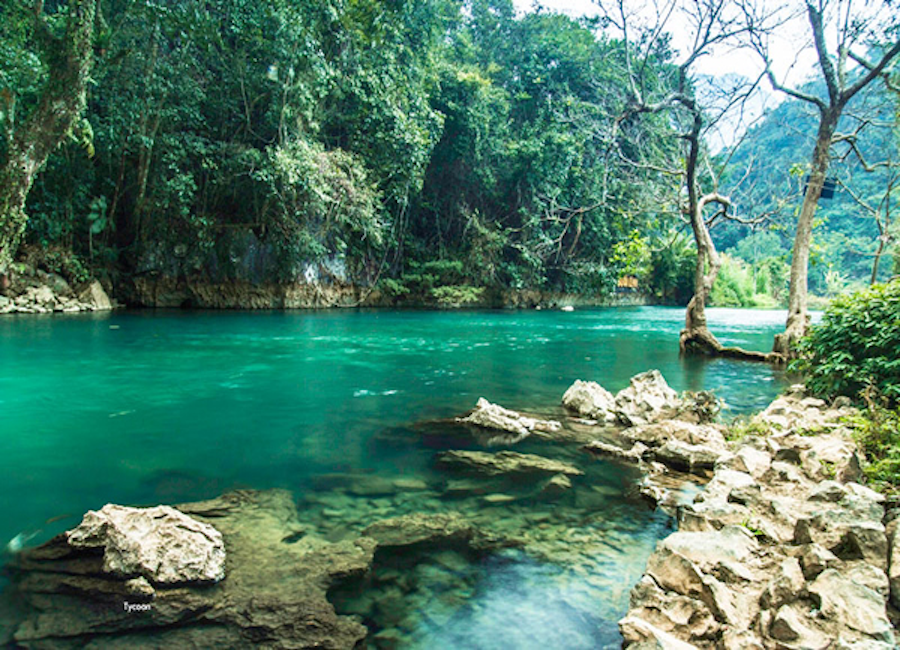
Pac Bo Vietnam is a beautiful area with a lot of meaning because of its beautiful natural scenery and its connection to the country’s history. Pac Bo Vietnam is where Uncle Ho worked once he came back to the nation. The clear emerald green stream, the wide variety of plants and animals in the forest, and the serene, soft environment make Pac Bo Vietnam famous.
Overview of Pac Bo in Cao Bang province
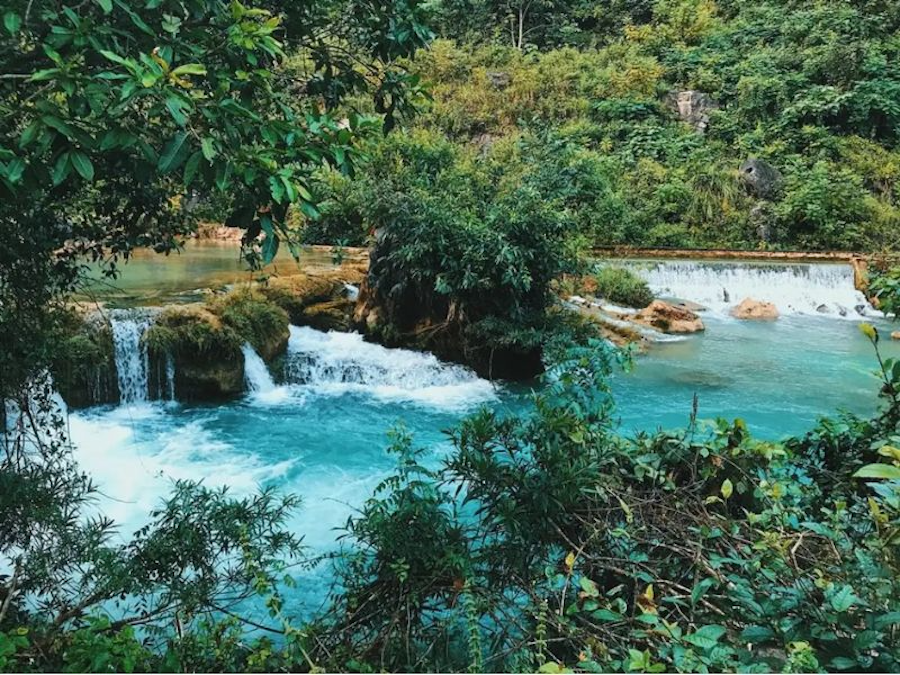
The Pac Bo historical site is in the Cao Bang province’s Truong Ha commune, in the Ha Quang district. In the Tay-Nung culture, “Pac Bo” signifies “headwaters.” President Ho Chi Minh also chose this place as the base for the revolutionary leadership. Despite having undergone many significant historical events, this area still retains nearly all the evidence and marks of the Vietnamese revolution and Uncle Ho.
The various rough mountain ranges, waterfalls that appear to call and touch, and cool green bamboo groves that blanket the sky make Pac Bo Vietnam a beautiful place to visit for the first time. You can visit several notable historical places, like Lenin Stream, Karl Marx Mountain, the President Ho Chi Minh Memorial, and Pac Po Vietnam. These are in addition to the stunning natural environment. You can enjoy Cao Bang’s stunning mountains and the area’s hidden historical and cultural qualities.
The cold, clear Lenin stream and the spectacular Karl Marx Mountain are near Pac Bo. Uncle Ho named the renowned leaders there. Visitors to this place can see important historical sites and also learn about the modest, quiet, but meaningful life of the people. This area is a wonderful mix of beautiful nature and important historical sites that show the country’s might.
Historical significance of Pac Bo
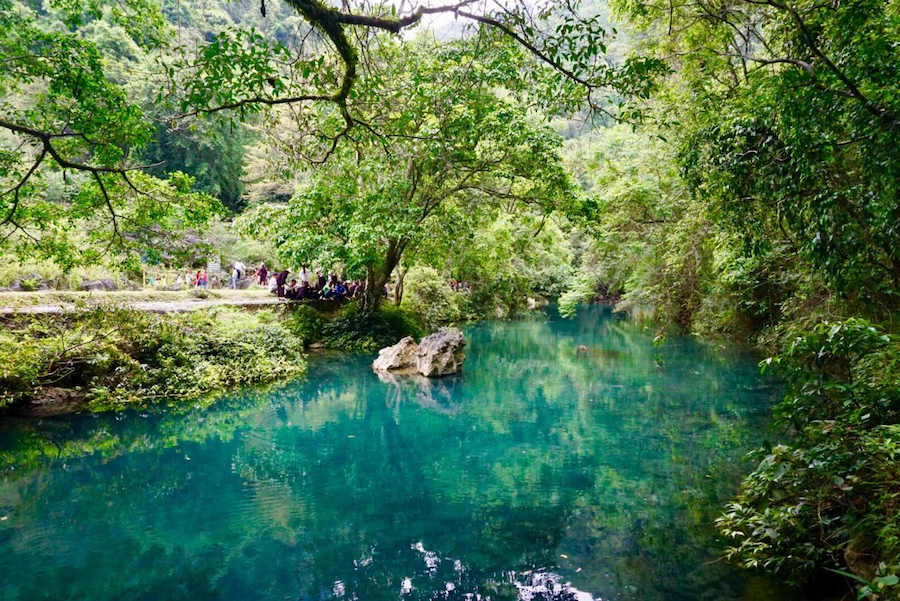
Uncle Ho resided and worked in Pac Bo Vietnam from January 1941 to May 1945, when he traveled to uncover a method to save the country. This area was picked as a base because it is difficult to get to, easy to defend, and close to the border, making it easy to move. Uncle Ho and his friends in the Party Central Committee talked about vital revolutionary strategies that would assist the country in winning the August Revolution of 1945, which the Vietnamese people are very proud of.
While he was at Pac Bo Vietnam, Uncle Ho had many critical meetings, gave orders, set up the Viet Minh front, and put together many vital papers. He also wrote poems to inspire revolutionary spirit, which was also the basis for the later formation of the Democratic Republic of Vietnam administration.
Pac Bo Vietnam is a spot that demonstrates the powerful and unbreakable spirit of the Vietnamese people and their love for their country. This place shows the desire to free and develop the country, not just Uncle Ho’s marks. Pac Bo Cave is a spot that saw difficult times when Although resources were low, the spirit remained strong and vibrant. This is why it serves as a lesson in patriotism for future generations.
Pac Bo Vietnam is more than just an old building. It’s also a site where people can learn about the revolution and the patriotic history of our country. The beautiful Lenin Stream and the stories of President Ho Chi Minh’s outstanding leadership have made this place quite interesting. Visitors will feel the country’s love for its people when they come here.
What to see at the Pac Bo historical site
Places not to be missed when traveling to Pac Bo include historical landmarks, breathtaking natural scenery, and cultural sites that offer a deeper understanding of Vietnam’s revolutionary past and the beauty of Cao Bang Province.
Stream of Lenin
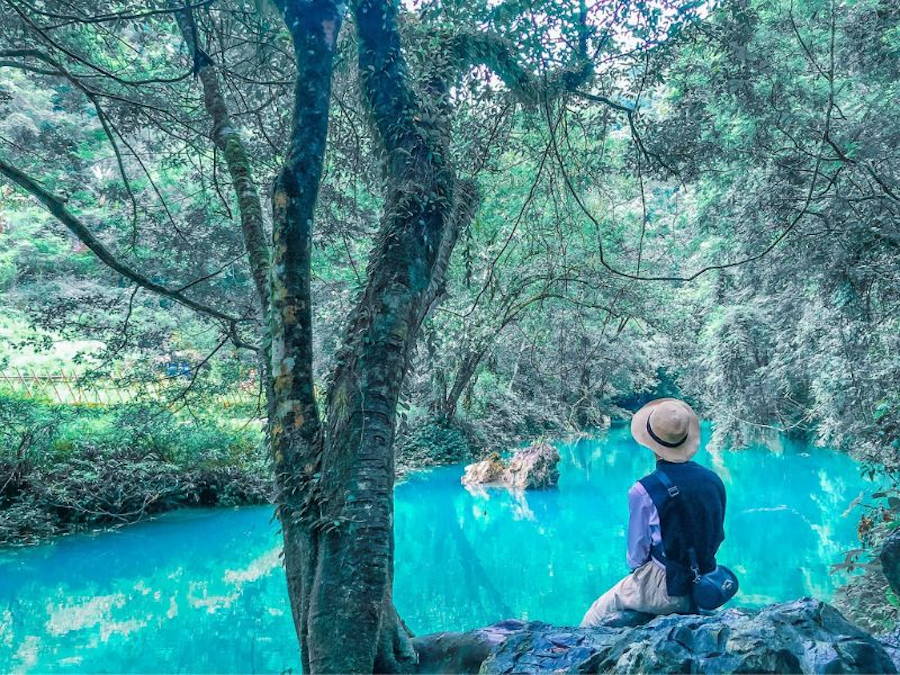
The Pac Bo Cao Bang Historical Site is home to Lenin Stream, which used to be called Khuoi Giang Stream. People know this spot for its brilliant blue water that is so clear that you can see all the way to the bottom, like a mirror showing the earth and sky. Many people adore this stream because it is tranquil and has a beautiful landscape that is full of lyricism that words can’t adequately explain. Lenin Stream has kept its original attractiveness over the years, and more and more people are coming to see its lovely and graceful elegance.
Mount Karl Marx
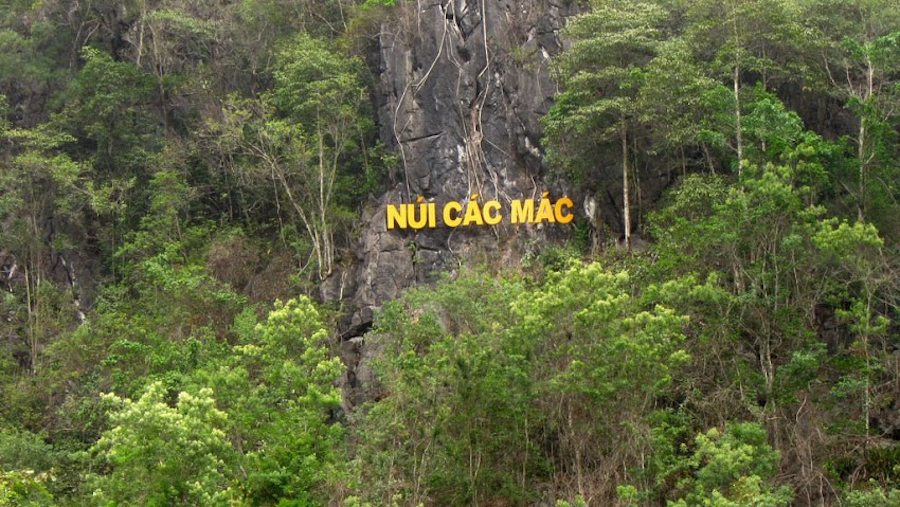
Mount Karl Marx, named by President Ho Chi Minh after the German philosopher, is another remarkable site in the Pac Bo area. Mount Karl Marx features deep green forests and vast spaces inside, but the outside is very rough. Maybe this is also why the mountain was picked as a covert base.
Pac Bo Vietnam
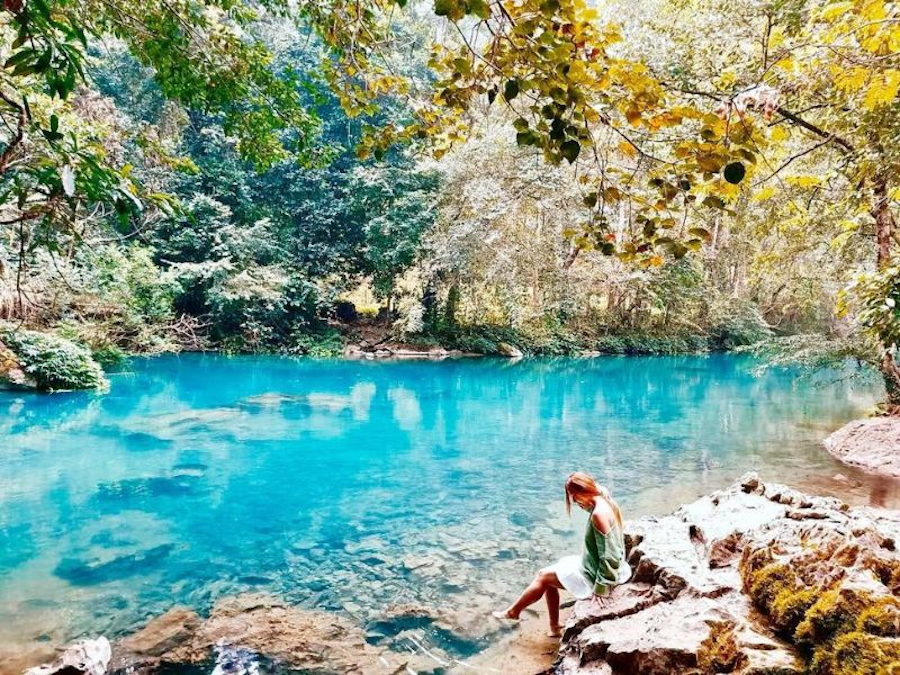
The renowned poem “In the morning, go to the stream; in the evening, go to the cave” by Uncle Ho is about Pac Bo Vietnam. This location is also known as Coc Po Cave. It is only around 15 square meters wide and was where Uncle Ho lived and worked when he first came back to the country. The cave still has the wooden bed where Uncle Ho slept, the fire he used to keep warm in the center of the sacred forest with stagnant water, the dangerous stone table, and the rock where he often sat fishing. All of these artifacts are still there, and they have become important parts of the Pac Bo tourist area.
The Ho Chi Minh Temple

Don’t forget to see Uncle Ho’s temple on Tieng Chay hill when you go to the Pac Bo historical site. The temple was finished in May 2021, which was the 121st anniversary of President Ho Chi Minh’s birth. The temple resembles a stilt house, a type of dwelling that is especially prevalent in this region.
The temple is not simply a place that many people visit as tourists, but it also has historical and cultural significance. It shows how following generations honored and respected Uncle Ho, the hero who fought for the country’s freedom and integrity.
Khuoi Nam Hut
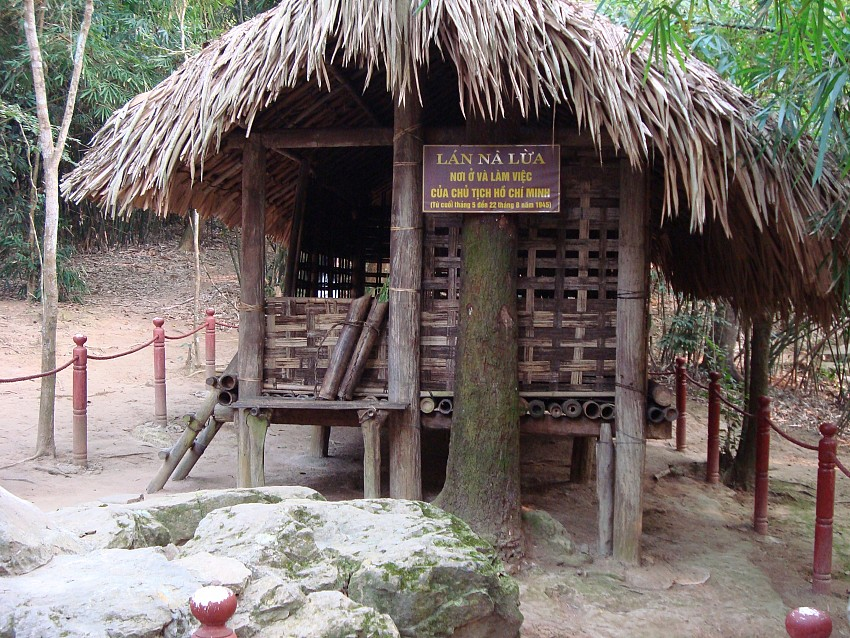
Khuoi Nam Hut is around 1 km from Pac Bo Cave and was Uncle Ho’s home for the longest time in Cao Bang. The chalet sits near the foot of the mountain, thus the approach to it is steep and twisting. Khuoi Nam Hut has been fixed up and paved with stone so that it is easier to walk on. The hut is only around 12 square meters big and is built in the form of a simple stilt house. It is close to a creek, which makes it easy to watch and hide if there are attackers.
How to get to Pac Bo from Cao Bang or Ban Gioc Waterfalls
The Pac Bo Cave is in Truong Ha Commune, Ha Quang District, about 50 kilometers north of Cao Bang City. If you want to drive, take a taxi, or hire a private automobile to go to Cao Bang, you can do so by taking Highway 3 through Thai Nguyen, Bac Kan, and then to Cao Bang. A lot of drivers take this route.
When you get to Cao Bang city, you will take National Highway 3 to Ha Quang district. From there, you will get onto DT208 road, which is easy to travel on and good for getting around.
You can drive, ride a motorcycle, or rent one to get there. It’s around 50 kilometers away. This is undoubtedly the way that many travelers, especially young ones who want to see new things, get around.
You may travel from Ban Gioc Waterfall to Pac Bo. The distance is roughly 90–100 km, and it takes about 2–3 hours to drive. To get to Cao Bang City from Ban Gioc Waterfall, take National Highway 3 or Provincial Road 206. Then, take National Highway 3 or Provincial Road 202 from Cao Bang to the Pac Bo relic site.
Best time to visit Pac Bo
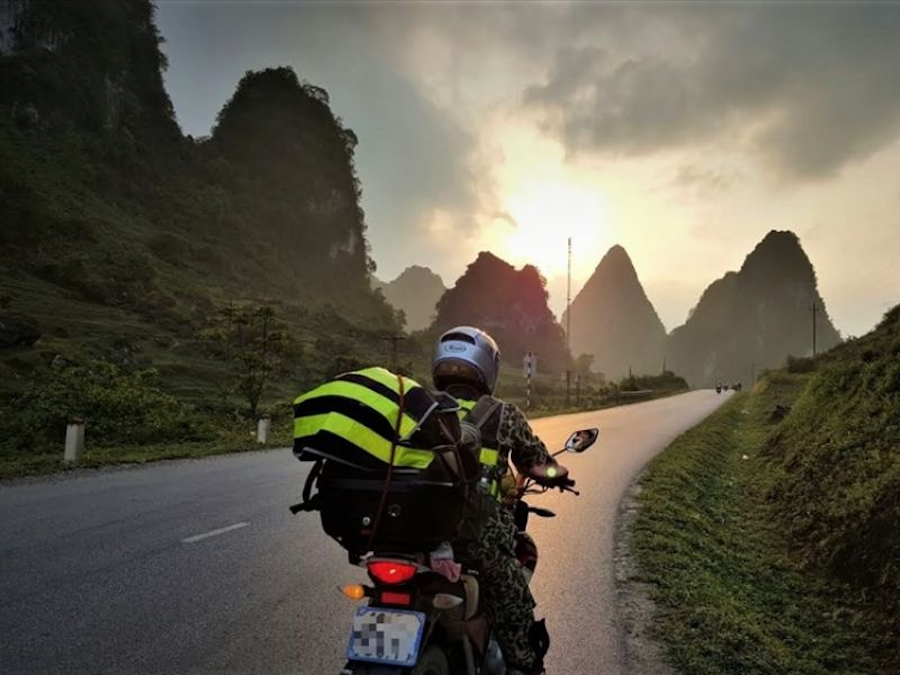
Pac Bo is a magnificent place with mountains and rivers. Each season has its own beauty, but the best time to visit is from October to May of the following year. The weather is cool right now, not too cold or too sunny, and there isn’t much rain, so it’s easy to go on rocky mountain roads.
You can really appreciate the poetic beauty of Lenin stream, which is known for its incredibly gorgeous turquoise water. Keep in mind that there will be a lot of rain from July to August, which will make the water flow and make the surface of the water unclear. This will make it hard for you to experience the warm beauty of the spot where Uncle Ho’s footprints were left.
Entrance information and visitor experience
Pac Bo historical site is open from 8am to 5pm every day of the week with 3 ticket prices:
Adults: 20,000 VND/ticket
Children over 10 years old: 15,000 VND/ticket
Children under 10 years old: Free
Pac Bo is also a tourist spot with a beautiful, lyrical, and romantic environment. It also has a lot of historical significance because it is home to Uncle Ho’s remains. So, individuals need to pay attention to a few things when they come here, such as
You can’t touch artifacts or images without asking first.
Don’t throw trash on the ground to protect and keep the area around you clean.
You should wear garments that are comfortable and easy to move in on mountain routes.
Please carefully review and adhere to the guidelines set by the historical site management board.
Tips for Visiting Pac Bo
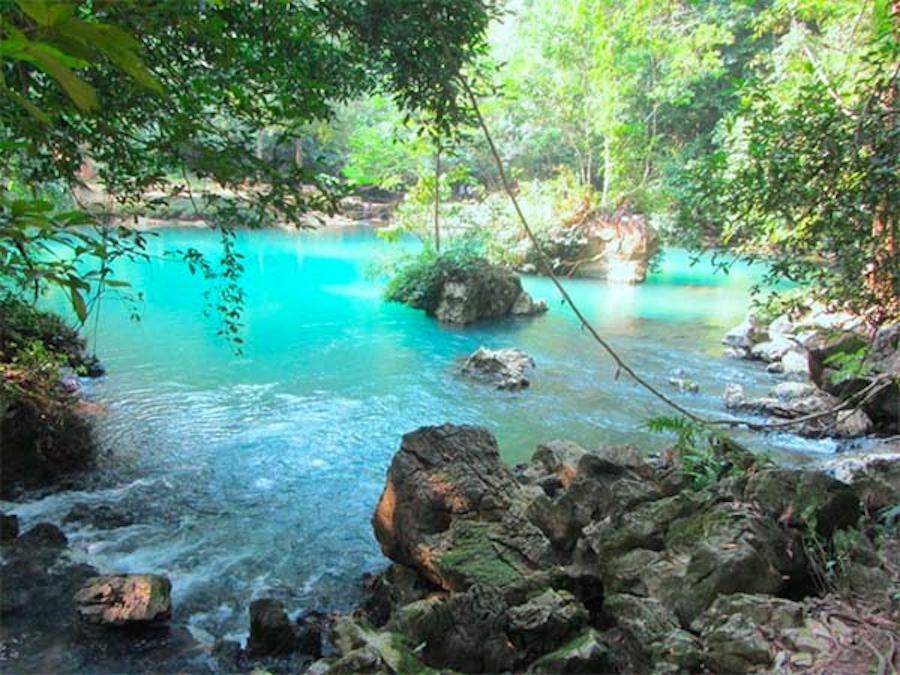
To have your vacation to Pac Bo go smoothly and be meaningful, you need to plan beforehand and follow some rules. Before you go to the relic site, learn about its history and importance. Pack the right clothes and shoes, bring everything you need, and make sure to keep the area clean, respect nature, and respect the relic.
To understand more about this relic, do not forget to find out information before going. You can ask more information or questions about this relic with the tour guide or staff at the relic site. This will help save time and create more useful information for you.
Frequently Asked Questions about Pac Bo
Foreign tourists can visit Pac Bo in one day. People can get around by motorbike, bus with a motorbike taxi, or by renting a car. You should schedule a trip with a reliable firm that has an English-speaking guide if you want to learn more about the past.
Is Pac Bo suitable for a one-day trip?
If you plan your time well, you can see everything at the Pac Bo relic site in one day. You should leave early (about 7 a.m.) from the center of Cao Bang city because it takes around 1.5 hours to go to the relic site. You can see some of the best things here, like the Pac Bo Museum, Lenin Stream, Karl Marx Mountain, Coc Bo Cave (where Uncle Ho used to live and work), and Khuoi Nam Hut, and if you have time, you may trek to milestone 108 of the Vietnam-China border.
You can eat at nearby restaurants or pack your own lunch. In the afternoon, stroll around, take pictures, and come back to Cao Bang city between 4 and 5 p.m. If you get enough sleep, drink water, eat snacks, and wear the right clothes for a lot of walking, the journey will be over in a day.
Can foreign visitors go without a guide?
Foreign visitors can completely travel to Pac Bo on their own if they are well prepared. From Cao Bang City, you can take a bus to the relic site, then travel about 10 km by motorcycle taxi or rent a motorcycle for more flexible travel. If you want to drive a motorbike yourself, you need an International Driving Permit (IDP) because domestic driving licenses are often not recognized.
The road to Pac Bo is relatively easy to travel compared to other mountain roads in the North, but you still need to be careful due to the mountainous terrain and winding sections. In addition, many homestays and hotels in Cao Bang also provide car rental services with private drivers, suitable for those who do not want to drive themselves. In general, exploring Pac Bo on your own is completely feasible and suitable for visitors who love independent experiences and learning more about Vietnam’s revolutionary history.
Are there English signs or translations available?
If you book a tour with a reputable company like Red Gecko Travel or Hanoi Northern Travel, you can find an English-speaking tour guide at the Pác Bó historical site. These tours usually come with a guide who knows a lot about history, speaks English well, and is there to help you the whole time. However, if you go on your own or book a tour through a small homestay, you can’t be sure that the guide will speak English. So, to get the most out of their visit to Pác Bó and understand its historical significance better, tourists should book a tour with an English-speaking guide in advance.
Pac Bo Cave is not only a historical site from the revolution, but it is also a place with a lot of cultural and natural beauty. This site has a wild beauty, a clear Lenin stream, and strong connections to President Ho Chi Minh. It gives visitors both a tranquil and meaningful experience. Lily’s Travel says that going to Pac Bo Cave will help you learn more about the history of the country and experience the lovely environment of Vietnam.
Read more: Thang Hen Lake: The poetic “Tuyet Tinh Coc” of Cao Bang



